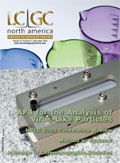My 50+ Years in Chromatography
LCGC North America
The former "Milestones in Chromatography" editor returns to give readers the story of his time in the field.
Jack Rhodes, the long-standing marketing director of the Perkin-Elmer Corporation (now PerkinElmer, Inc., Shelton, Connecticut) in the second part of the 20th century, used to introduce me as the guy who was present at creation (meaning gas chromatography). I always tried to correct him, saying that I only joined the field a few seconds after the Big Bang. However, it is true that I had the good fortune to witness the development of gas (and modern high performance liquid) chromatography from its very beginning and participate in it in various capacities. I started as a user at a time when there were very few users; then I switched sides and for over 30 years I had an active role as the interface between the manufacturer and the users. In the last 15 years, my activities became restricted mainly to serving as a chronicler of past events. However, I still consider myself an active chromatographer who tries to follow the events.
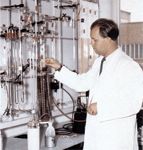
Figure 1: L.S. Ettre with a self-constructed Janák-type gas chromatograph in the laboratories of the LURGI Corporation, Frankfurt am Main, in 1957.
My more than one half century in this field had some special bonuses. I was able to serve as the roving ambassador of chromatography on five continents (there is no chromatography in Antarctica!). I met and had close contact with most of the pioneers, and acquired many good friends from California to Japan, and from Norway to South Africa.
Now, toward the end of my professional life, it is worthwhile to look back to these 50+ years and reminisce about my most interesting experiences.
The Beginnings
I started in gas chromatography (GC) in the spring of 1957, in Frankfurt am Main, the German Federal Republic, as a Hungarian refugee. I was looking for a job and, during an interview, they noted from my résumé that in Hungary I had been involved in some laboratory separation (it was actually distillation). The interviewer remarked that separation is separation, and offered me a position if I could straighten out their new gas chromatograph that no one could operate. Quite honestly, I had no idea what GC was, but when you need a job, you do not hesitate and say yes to any offer.
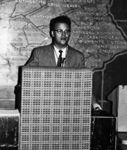
Figure 2: L.S. Ettre at the International Microchemical Congress held at Pennsylvania State University, Summer 1961.
In the U.S., the first commercial gas chromatographs were introduced in 1955, among them the Model 154 Vapor Fractometer of Perkin-Elmer (1). The company opened a sales office in West Germany (in Frankfurt) in 1956, selling a few Model 154Bs (an improved version of the original instrument), and the laboratory where I started to work bought one. However, they did not know how to operate it and of course, no one knew anything about GC. The technique was in its infancy — as we were joking, most people could not even properly spell the name. Except for a few publications, the only available printed basic information was a 31-page long brochure from Perkin-Elmer. Fortunately, Perkin-Elmer's sales office was near, close to my laboratory, and they were of great help. Thus, within a few weeks, I established a viable GC service laboratory within my company's R&D facilities.
A number of difficulties had to be overcome, starting with the fact that the instruments of the 1950s used thermal-conductivity detectors in which, for good sensitivity, helium or hydrogen were used as the carrier gas. However, most laboratories did not permit the use of hydrogen for safety reasons, and helium could only be obtained from the U.S. through a fairly complicated, lengthy, and bureaucratic procedure. It was also very expensive and, thus, for many labs, prohibitive. (Jim Lovelock mentions [2] that even the most prestigious British medical research institute in London could not afford the purchase of helium.) Fortunately, my company was willing to spend the money and thus, I was able — albeit, with some sample manipulations — to analyze impurities down to the 0.01–0.02% level. Also, we had to prepare our own (packed) separation columns: I remember having two Soxhlet apparatuses in continuous operation in my laboratory to purify the only commercially available pink diatomaceus support.

Figure 3: L.S. Ettre (right) and R.D. Condon (Perkin-Elmer) at the 1962 Hamburg Symposium. In the left background: K.I. Sakodynskii (Moscow).
My laboratory was part of a large engineering company involved in the development of chemical processes, designing and constructing large chemical plants. In the 1950s, they built the SASOL plant in South Africa — a major undertaking — and in 1957–1958, they were still busy debugging it. SASOL utilized the Fischer–Tropsch process to produce hydrocarbons from brown coal through the catalytic conversion of water gas. (During World War II, a significant part of gasoline was produced in Germany in this way.) The bulk of the samples we had to analyze were related to this process, consisting of mixtures of inorganic gases and C1–C4 hydrocarbons. My sample load soon necessitated the purchase of a second 154B, and by the year's end, I self-built a third instrument, according to the system of Janák (3), particularly suitable to the analysis of such gas samples. Naturally, we also had a great variety of other types of samples and it was great fun to develop the individual methodology for their analysis. Let us not forget, that at that time, every sample was unique!
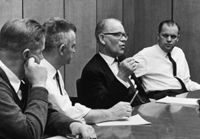
Figure 4: L.S. Ettre (right) and A.I.M. Keulemans (Eindhoven, the Netherlands) at the first "Zlatkis Meeting" (1963, Houston, Texas).
While working in Germany in 1957–1958, I had the good fortune to be able to participate in the famous International GC Symposium held in May 1958 in Amsterdam, where the most important new GC developments were introduced (4). I had no idea that in less than six months I would be a part of this development, not as a user, but as a member of the developing team.
I always considered Germany as a transitional place for me, and my intention was to immigrate to the U.S. Finally, my wife and I received our immigration visas in the spring of 1958, and after a long vacation in Italy and France, we crossed the Atlantic Ocean in September 1958, arriving in New York City. Within one month, I started to work at Perkin-Elmer as an application engineer. My new affiliation was a direct result of my activities in Germany.
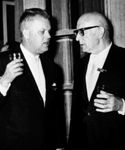
Figure 5: L.S. Ettre (left) and M.J.E. Golay (Perkin-Elmer) in 1965 at a Symposium in Athens, Greece.
As I mentioned earlier, in Frankfurt I established a fairly close connection with Perkin-Elmer's sales office, and particularly with their representative, Joachim Wolff. Thus, the week before our departure, I visited him to say farewell. Due to a sudden, very heavy thunderstorm, my visit took longer than planned. During our conversation about my future plans, Wolff suggested that, after arriving in the U.S., I call Vincent Coates, the head of Perkin-Elmer's Applications Engineering, in Norwalk, Connecticut. He certainly would be able to help me to find a suitable position somewhere. The use of GC was increasing rapidly and at that time, there were not too many experienced chromatographers available on the labor market. Eventually, I did call Perkin-Elmer. I was most surprised that Coates' secretary knew about me and told me that they already expected my call. I was invited to Norwalk and there, they hired me. This sounds wonderful. However, there was a "catch." As I later found out, Joe Wolff actually wrote a letter to Coates, indicating my expected call. In this letter, he explained my background and then continued by saying that he had a lot of problems with me as a customer. Therefore, he suggested that Vince hire me, so that from then on I handled customers' problems instead of being one.
Applications Engineer at Perkin-Elmer
The decade after World War II saw the establishment of the new scientific instrument industry, and the concomitant change in analytical chemistry: classical, wet methods based upon extraction, precipitation, and titration were replaced gradually by methods based upon the measurement of some physico-chemical characteristics. This created a gap. The analytical chemists active in the various laboratories were not trained in the new techniques and were not familiar with their theoretical backgrounds and methodology, Thus, they not only had to learn the operation of the new instruments; they also had to became familiar with the variables of the new techniques, The situation was complicated further by the fact that while there were plenty of textbooks available on the classical wet analytical methods and their use, practically no such literature existed on the new analytical techniques.

Figure 6: When two techniques competed...The Yellow Camaro's license plate says GLPC, while the plate of the brown TransAm is HPLC. The Camaro was mine and the TransAm belonged to Csaba Horvath (early 1970s).
Simultaneously, another problem also became evident. These new scientific instruments essentially were designed and constructed by physicists and electrical engineers who were often in the dark with respect to chemistry, and thus, needed help.
To bridge these gaps, a new type of group evolved at the instrument companies: the so-called "application engineering" group. Their activities were considered so important that in 1961 the journal Analytical Chemistry devoted a major article to these groups. The article was anonymous, indicating that it reflected the opinion of the editorial board. Actually, it was written, after consultation with us at Perkin-Elmer and others, by Larry Hallett, the highly respected editor of the journal. It outlined the function and operation of these groups and their role in the interaction between the instrument-supplying companies and their customers (5):
"The applications engineer represents the customer viewpoint within the corporation and the corporation's technology to the customer. . . . (He is) the technical face of the corporation to the customer."
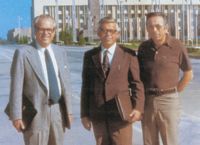
Figure 7: From left: L.S. Ettre, B.V. Ioffe (University of Leningrad, today St. Petersburg) and A. Zlatkis (University of Houston, TX) in 1976 in Samarkand.
I spent a decade in applications engineering, from 1961 on as the head of its GC group. It was most rewarding to work with prospective customers who first could not even properly pronounce the word "chromatography," and see how eventually they became enthusiastic users of the technique. Naturally, it was also our job to expand the use of GC into new fields. Two examples will illustrate our activities.
During the winter of 1958–1959, we received a call from a chemist working for a food company producing potato chips. He explained his problem. When the chips were stored for too long or in too warm a room, they become rancid, with an unpleasant odor and taste. As he told me, he had just heard a general lecture on GC and found one statement particularly interesting: that the detector functions similar to our nose, "smelling" the volatile components. Would GC not be able to detect or measure rancidity? I told him that we would look into his problem but needed some samples, and within a few days we received by freight 12 large boxes each containing a dozen bags of chips. (This was the "smallest sample" they could ship. For a month everybody ate my chips!) I placed a couple of bags into an oven imitating summer temperature; when a bag was opened, it indeed smelled bad. Now, my problem was how to get a sample into the gas chromatograph? At that time the microsyringes universally used today were not yet available (Clark Hamilton introduced the microsyringes only in 1959) and we were restricted to the use of 0.5–1.0 cc medical syringes. I took one bag of the rancid chips, pierced it with the syringe needle, withdrew a gas sample from the bag, and injected it into the gas chromatograph. Indeed, a number of peaks were obtained, characteristic of the degradation products of the fatty acids present in the chips.

Figure 8: From right: S.R. Lipsky (Yale University, New Haven, CT), L.S. Ettre and A. Zlatkis (University of Houston, TX) at the 14th International Symposium on Advances in Chromatography (Lausanne, Switzerland) in 1979.
In this pioneering period of GC, almost everything we did was "new," representing a hitherto untried application, and this example shows this well: by the potato chip investigation, I practically invented headspace analysis by GC.
As previously mentioned, our duty also was to expand the field of GC use. Sometimes this had some unexpected results. Soon after the introduction of instruments with a flame-ionization detector, which is blind to water, we found that its sensitivity was well demonstrated by the analysis of alcoholic beverages, particularly showing some of the impurities causing unpleasant side effects (hangover!) that otherwise would be overlapped by the water peak. After some investigations, we submitted a paper to the forthcoming national meeting of the American Chemical Society to be held in Washington, D.C. (6). At the last moment, I came down with influenza and was unable to travel, and so the paper was presented by my coworker Frank Kabot. As told to me, it was a standing room-only event. Novel applications of GC interested everybody and our subject was "catchy" in its own right. After his presentation, Frank was deluged by scores of questions, not only by chemists, but also by reporters (national ACS meetings usually are covered by the science reporters of the major newspapers). This was the first time that Frank was faced by such an interest and, thus, he could not always properly handle silly questions — I still remember newspaper articles reporting that "chemists can eliminate hangover."
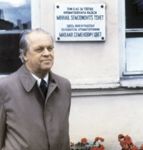
Figure 9: L.S. Ettre at the University of Tartu (Estonia), in front of a plaque commemorating M.S. Tswett as a professor of the school in 1917â1918.
By the end of the 1960s, our sales offices in the U.S. were enlarged and, at least the major offices also included product specialists who, due to their closeness to the customers and users, could even better serve them. Our direct applications engineering function was slowly transferred to them and we became involved in the general aspects of GC development. However, this decade was probably the most interesting period of my professional career.
A special field that we were involved in was headspace analysis by GC. In 1967, our German affiliate developed a special instrument for the automated determination of alcohol in blood according to the method of Professor G. Machata (University of Vienna, Austria). In the next decade, this instrument was further improved, its applications extended, and eventually also marketed in the U.S. In the 1980s, our laboratory also became involved in further development of headspace GC (HS-GC) and, together with my German colleague and friend Bruno Kolb; I started to organize short courses on HS-GC at the annual Pittsburgh Conferences. These courses were highly successful and we continued to have them in the first part of the 1990s, even after my retirement from Perkin-Elmer. Finally, Bruno and I decided to write a monograph on the subject, published in 1997 (7). In 2006, a second, enlarged edition of the book was published.
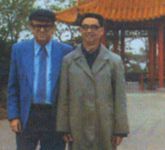
Figure 10: L.S. Ettre (left) with Prof. Lu Peichang (Dalian, China, 1980).
With regard to instrument development, our main function was to cooperate with our R&D people, particularly in four aspects: advise them about any new development to be incorporated in our new instruments, establish the specifications of a new instrument, and then, during development, test the individual components under chromatographic conditions. When finally the prototype was built, we served as its first user, trying to see what could go wrong. I am sure that my friends at the other instrument companies went through similar experiences, fulfilling the same functions.
Columns
The greatest contribution of Perkin-Elmer to GC was, of course, the development of capillary columns by Marcel J.E. Golay, in 1957–1958. His most detailed presentation on their theory, with examples of their applications was presented at the International GC Symposium held in May 1958, in Amsterdam, where I was participating from Germany. When in the fall of that year I joined Perkin-Elmer in the U.S., such columns already were used routinely by my colleagues in a new GC system equipped with a flame-ionization detector (introduced at the 1959 Pittsburgh Conference). In the next 30 years, practically until his death, I had the good fortune to work closely with Marcel, one of the most extraordinary people I have ever met.
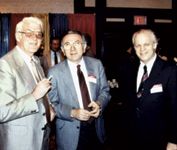
Figure 11: From left: M. Verzele (University of Ghent, Belgium), A. Zlatkis (University of Houston, TX), and L.S. Ettre at the 15th International Symposium on Advances in Chromatography (Houston, TX, 1980).
Particularly in the early years of the 1960s, there was a great interest by practicing chromatographers to learn more about capillary columns, and I was invited to lecture on their theory and practice at a number of regional meetings. Based upon this interest, I felt that it would be worthwhile to compile a book on the subject, and I enlarged my lectures into a relatively small, 164-page monograph published in 1965 (8). As expressed by Csaba Horváth (9):
"for a long time, (this book) served as the Bible for those who were engaged in working with capillary columns in the first epoch of capillary GC."
In 1980, when I first visited China, it was very gratifying to see a pirated Chinese edition of my book on many desks, with pencil-written notations on the page margins indicating that they were really actively using it.
In the 30 years I was active at Perkin-Elmer, I was involved in various aspects of capillary column development and I will only mention one subject: the study of column variables (length, diameter, and film thickness) and their influence on the analytical reports. Finally, I presented a summary of our activities in this field in 1985, at a symposium held in Urbino, Italy, honoring A.L.P. Martin's 75th birthday (10).
In 1963, we took over the results of the development of support-coated open-tubular (SCOT) columns from Csaba Horváth, further improving them, and for four years, I was part of this project. (For a summary review, see reference 11.) These columns were quite popular in a number of fields, but today, they are mostly forgotten, mainly because of the superior performance of present-day fused-silica capillary columns. There is no question that the SCOT columns we made 40 years ago had some shortcomings and we were aware of them. However, their theory and concept were basically sound and thus, there was no reason not to try to apply these with present-day, more advanced materials and systems.
History of Chromatography
In my life, I have always been interested in history and particularly in the influence of general events on specific developments. In fact, chromatography is a good example of such an interaction. When Tswett developed the technique in the first years of the 20th century, the field was not yet ready for it: chromatography was accepted only 30 years later, after fundamental changes in biochemistry and in our thinking. Because I joined the field of GC at such an early stage, I was able to follow its evolution closely and chronicle its various events. Among the various questions posed to me, I would like to mention two special subjects, each representing an important step in the evolution. Together with Professor Hais of Prague, Czech Republic, and others, we made the correspondence of Tswett with his Swiss friends generally available to the public (12,13), and with H.G. Struppe, we reported GC activities in the former German Democratic Republic (14) that had been practically unknown and undocumented in the western world.
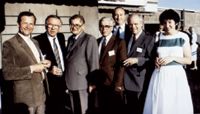
Figure 12: At the 21st International Symposium on Advances in Chromatography, Oslo, Norway, 1985. From left: R. Kaiser (Institute of Chromatography, Bad Dürkheim, Germany), A. Zlatkis (University of Houston, TX), K.I. Sakodynskii (Karpov Institute, Moscow, USSR), B.I. Ioffe (University of Leningrad, today St. Petersburg), A. Karmen (Albert Einstein Medical School, Bronx, NY) L.S. Ettre, and G. Malikin (A. Einstein Medical School).
In his lecture on the occasion of receiving the Chemistry Nobel Prize in 1952, A.J.P. Martin mentioned that one should devote particular attention to the individual evolution of scientists leading to certain key developments. In 1979, this statement induced Al Zlatkis and myself to compile the recollections of three scores of chromatography pioneers (15).
As mentioned, I periodically chronicled various aspects of chromatography development during my chromatography career. Then, in 1997, I started to contribute on a quarterly basis a regular column to LCGC, "Milestones in Chromatography," which covered events ranging from Moses up to the most recent times. In the subsequent decade, a total of 35 such columns were published. I finished this project by the end of 2007. At the same time, based upon these and other articles, I prepared a book titled Chapters in the Evolution of Chromatography, and it was published last year (16). I hope that future generations of chromatographers will benefit from reading about the activities of the pioneers.
Publications
From 1949 on, Perkin-Elmer published a highly praised quarterly entitled Instrument News for over 20 years. In addition to news and reports on new instruments, the journal regularly included technical articles. The journal had an excellent reputation — for example, in the early 1950s, even J. Edgar Hoover authored an article on the use of IR spectroscopy in forensic work (17).
In 1961, the five-year anniversary of the invention of capillary columns was commemorated with a special issue compiled by myself (18). In addition to a brief summary of the characteristics and advantages of these columns, this issue contained a collection of 14 chromatograms showing the analysis of some typical samples and a bibliography of publications on the use of capillary columns, listing a total of 81 papers.
Perkin-Elmer also published other journals: the first was the Atomic Absorption Newsletter and then, in 1972, we started Chromatography Newsletter as a quarterly. I have served as the editor of the latter.
Perkin-Elmer had a long experience in publishing brochures for customers and earlier I mentioned the small, 31-page long booklet on the principles of GC. It was written by Harry Hausdorff and published in 1955 at the introduction of the first gas chromatograph (19). In the 1950s, Ralf Müller, the famous columnist of Analytical Chemistry particularly praised this literature and the company's activities in the dissemination of scientific information (20). Upon the advent of modern, high performance liquid chromatography (HPLC) 25 years later, together with Ralph Conlon and Roy Yost, two of my colleagues, I wrote a more elaborate, basic introductory text on this technique (21). This book became quite popular; in fact Csaba Horváth mentioned that there was a black market for it among his students (9). In addition, the book also was available in Spanish (22), Italian (23), and French (24) translations, and used extensively in these countries as an introductory text.
The books mentioned previously were more or less directly related to my activities at Perkin-Elmer. I also was involved in compiling GC monographs for the general users. In 1967, I edited with Al Zlatkis a general textbook (25) and then, in 1969, with Bill McFadden of International Food & Fragrances a pioneering book on hyphenated techniques involving GC (26). Today, such systems are commonplace in laboratories. However, this was not the case 40 years ago, and our book was pioneering in this field. Even the nomenclature was not yet settled and we were not sure what term to select for the book's title. Finally we decided on Ancillary Techniques. The book also was published in Moscow, where the title was very aptly translated as Metody Sputniki (27). As I later found out, this book also had a pirated Chinese edition.
After retiring from Perkin-Elmer, I published two small books intended for practical (gas) chromatographers with my former colleague John Hinshaw (28,29). The first also was published in an enlarged German edition (30), and both also were published in Chinese translation.
Meetings
The evolution of chromatography after World War II was characterized by the frequent organization of scientific meetings on regional, national, and international levels. From 1958 on, I frequently participated in many of them and a report on my experiences would fill a whole journal issue. Some of these are funny, such as the need in Las Vegas to postpone the start of an afternoon session because the keynote speaker was winning at the crap table. Others were rather unexpected, as in Samarkand, in Uzbekhistan (then still part of the Soviet Union), when the reporter of the local radio asked my opinion about Uzbekh science and its comparison with science in the capitalist countries.
Among the various symposia series I personally had been involved in the so-called "Zlatkis meetings" (1963–1988) and the symposia devoted to the development of capillary (gas) chromatography, which is still active. I will briefly comment on these two.
In Europe, the principal GC symposium series started in 1956 in London, and the (British) Gas Chromatography Discussion Group was formed for its management, with a decision to hold the symposia biannually, in even numbered years, in various European cities. Eventually, the group and the meetings were expanded to encompass the whole field of chromatography and then, in 1972, the group was further enlarged into the Chromatography Society. Between 1972 and 1987, I served as a foreign member of its Executive Board. This biannual symposium series is still active: the most recent meeting was the 27th, which was held in September 2008, in Münster, Germany.
Originally a complementary symposium series also was set up in the U.S. by the Instrument Society of America (ISA) and symposia in this series were held in 1967, 1959, and 1961, in East Lansing, Michigan. These meetings were successful as far as their scientific program was concerned, but there were some shortcomings, which were criticized by a number of participants. Al Zlatkis (University of Houston, Texas) and Sandy Lipsky (Yale University Medical School, New Haven, Connecticut) were instrumental in their criticism and they used the 1962 European Symposium held in Hamburg, Germany (where they all participated) to confront the designated chairman of the planned 1963 ISA Symposium to discuss the future. I happened to be present and so they invited me to join their meeting. Al and Sandy set four criteria for the future ISA symposia: the participants should stay in one major hotel with adequate comfort, where it would be easy to establish personal contacts; the draft of the presented papers should be available in preprints form to the participants; after the meeting, the final texts of the papers should be published in the proper scientific journal (and not in a limited-edition book); and the meeting should be accompanied by an exhibition of the newest scientific instruments. It was made clear by them that if these criteria were not met, they would organize meetings following these guidelines, essentially in competition with the ISA symposium series.
As expected, the conditions could not be met by the ISA organizers and, thus, a new symposium series was launched in January 1963, in Houston, by Al under the auspices of the university: the Symposium on the Advances in Gas Chromatography. In 1964, Al invited me to help him in the organization and our cooperation continued during all the "Zlatkis meetings," as the symposia of this series became informally known. Originally, the subject of the papers was GC, and it was then enlarged n 1967 to encompass all forms of chromatography. Until 1975, the meetings were held in the U.S. (in 1973 in Canada). From then on, they were alternately held in the U.S. and Europe, and two of the symposia were held in Japan. A total of 25 meetings were held in this series, the last in 1988, in Minneapolis, Minnesota. A detailed report summarizing the important developments first described at these symposia was presented by me at the last symposium (31).
By tradition, international symposia usually have a banquet or reception on one of the evenings, and the organizers always try to outdo the previous meetings by the selection of its location. The standard for these receptions was set by the 1958 GC symposium in Amsterdam. It was held in the Rijksmuseum, under the paintings of Rembrandt. Looking at his Night Watch, one could expect any moment that the bearded soldiers would step out of the canvas and join us for a drink. The 1967 Zlatkis meeting was held in New York City, in the Waldorf Astoria Hotel, and it was my job to find a proper place for the reception because the catering service of the hotel was much too expensive. I found it in the Playboy Club that had recently opened a few blocks up, just off Fifth Avenue, to which I had a key. Needless to say, we spent a very pleasant evening there. (Unfortunately, the club closed within a couple of years.)
The other symposium series for which I have served as a midwife still exist. It is the (originally biannual, now annual) symposia on advances in capillary column development that started in 1975, in Hindelang, Bavaria; it was originally restricted to discussions on glass capillary columns for GC. The story goes back to the early 1970s. In March 1974, Rudolf Kaiser, the well known German chromatographer, participated at the Pittsburgh Conference and on this occasion, he visited us at Perkin-Elmer. Rudi was an old friend of mine and I invited him to spend the weekend in my house in Norwalk. My wife and daughter were skiing in Vermont, so we were alone, and had plenty of time to discuss the widest variety of questions. Rudi mentioned that there was a need in Europe for some kind of periodic informal meetings, where a limited number of people can get together to discuss a specific subject. He particularly referred to glass capillary columns for GC: at that time, this whole field was in a state of flux, with different methods floating around for surface treatment, coating, and so forth. I mentioned the highly successful Gordon Conferences we had here, in the U.S., with around 100 participants each, under strict informality. One of the reasons for their success was their location, in rural New Hampshire, in fairly isolated places. I told Rudi that I was sure he could find some lovely inn, up in the Bavarian or Austrian Alps. He could select an off-season time between the skiing and the summer vacation periods, when the place would be empty of tourists.
A few months later, I received a message from Rudi, indicating that he had found the right place and soon I read the announcement of the First International Symposium on Capillary Glass Chromatography to be held in May 1975, in Hindelang, in the Bavarian Alps. As expected, the meeting was highly successful and represented the start of another key symposium series. Rudi and his wife, Annemarie, organized the first couple Hindelang symposia, then the organization was taken over by Pat Sandra of the University of Ghent, Belgium, who enlarged their scope to encompass all capillary and micro-column work (also including liquid chromatography and capillary electrophoresis). He then moved them in 1983 to Riva, on the northern shores of Garda Lake in northern Italy. Presently, the symposia alternate between Riva and an American location.
Travels
Over 2000 years ago, the Romans had a proverb: "peregrinare necesse est," referring to the urge of human beings to travel. The truth of this statement had been recognized at an early stage of chromatography development. The very first chromatography meeting held in the U.S. after World War II in 1946, already had European participation, and at the Faraday Symposium, held in 1949 in London, 44% of the papers were presented by scientists from nine countries outside the U.K. The nascent instrument business also became international and the new American companies soon had offices in Europe. By the time of my emigration to the U.S. associates of these companies regularly visited European laboratories and, after settling in the U.S., I also joined the traveling crowd. For example, in the summer of 1960, I had already presented a paper at a major international congress in Paris, and in 1962, I spent two months in Europe participating in symposia and visiting major laboratories in six countries. In the next 25 years, I regularly traveled to Europe. From 1976 on, I also visited the Soviet Union a number of times, its European part (Russia, Estonia), the Caucasus (Georgia) and Uzbekhistan, in Asia. Then, in 1980, I started to travel to Japan, China, and other Asian countries. In the past 50+ years, I visited a total of 58 countries as a roving ambassador of chromatography. My advice to present-day young scientists is: Try to travel as much as possible! Visiting foreign countries and meeting your foreign colleagues makes you a different person.
Friends
During a half-century in a field, one meets many people, building up with some close relationships, and at the end of this recollection, I would like to mention a few. From the older generation, it was always a pleasure to visit or correspond with Professors Erika Cremer (1900–1996) of Innsbruck, Austria, Andrei V. Kiselev (1908–1984) of Moscow, and Ivo Hais (1918–1996) of Prague, and discuss the widest possible subjects, from chromatography to history, and from the local food specialties to national customs and traditions. Earlier, I mentioned Professor Marcel J.E. Golay (1902–1989), my senior colleague at Perkin-Elmer, from who I learned a great deal. Among members of the younger generation, I should particularly note Professors Karl I. Sakodynskii (1930–1996) of Moscow, and Kiyukatsu Jinno (born 1945) of Toyohashi, Japan who were of great help to me. Finally, I cannot finish my story without mentioning my three dear friends with whom I had a long-standing close cooperation: Professors Al Zlatkis (1924–1998) of the University of Houston, and S.R. Lipsky (1924–1986) and Csaba Horváth (1930–2004), both of Yale University, New Haven, Connecticut. For us, chromatography was more than a profession, it became our hobby. And it was fun (in fact, it still is).
References
(1) L.S. Ettre, J. Chromatogr. Sci. 15, 90–110 (1977).
(2) L.S. Ettre and P.T. Morris, LCGC 25(2), 164–178 (2007).
(3) L.S. Ettre, LCGC 20(3), 266–374 (2002).
(4) D.H. Desty, Ed., Gas Chromatography 1958 (Amsterdam Symposium) (Butterworths, London, 1958).
(5) Anon, Anal.Chem. 33(10), 27A–41A (1961).
(6) F.J. Kabot and L.S. Ettre, Instr. News 13(4), 7–9 (1962).
(7) B. Kolb and L.S. Ettre, Static Headspace Gas Chromatography — Theory and Practice (Wiley-VCH, New York, 1997); 2nd ed. (Wiley-Interscience, New York, 2006).
(8) L.S. Ettre, Open Tubular Columns in Gas Chromatography (Plenum Press, New York, 1965).
(9) Cs. Horváth, Chromatographia 34, 209–211 (1992).
(10) L.S. Ettre, in The Science of Chromatography, F. Bruner, Ed. (Elsevier, Amsterdam, 1985), pp. 87–109.
(11) L.S. Ettre and J.E. Purcell, in Advances in Chromatography, Vol.10, J.C. Giddings and R.A. Keller, Eds. (M. Dekker, Inc., New York, 1974), pp. 1–97.
(12) L.M. Hais, M. Niang, and L.S. Ettre, Chromatographia 44, 545–558, 651–662, 663–667 (1997).
(13) L.S. Ettre and Y. Kazakievich, Chemia Analityczna (Warsaw) 48, 481–494 (1998).
(14) L.S. Ettre and H.G. Struppe, Chromatographia 59, 143–151, 275–282, 395–402 (2004).
(15) L.S. Ettre and A. Zlatkis, Eds., 75 Years of Chromatography — a Historical Dialogue (Elsevier, Amsterdam, 1979).
(16) L.S. Ettre, Chapters in the Evolution of Chromatography, J.V. Hinshaw, Ed. (Imperial College Press, London, 2008).
(17) J. Edgar Hoover, Instr. News 5(3), 1, 8 (1954).
(18) Instr. News 13 (1a), (1961) (special issue).
(19) H.H. Hausdorff, Vapor Fractometry (Gas Chromatography), A Powerful New Tool in Chemical Analysis (Perkin-Elmer Corp., Norwalk, Connecticut, 1955).
(20) R.H. Müller, Anal. Chem. 27(9), 22A (1955).
(21) R.W. Yost, L.S. Ettre, and R.D. Conlon, Practical Liquid Chromatography; an Introduction (Perkin-Elmer Corp., Norwalk, Connecticut, 1980).
(22) R.W. Yost, L.S. Ettre, and R.D. Conlon, Introduccion a la Cromatografia Liquide Practica (Perkin-Elmer Corp., Norwalk, Connecticut, 1981).
(23) R.W. Yost, L.S. Ettre, and R.D. Conlon, Introduzione Pratica Alla Cromatografia in Fase Liquide (Perkin-Elmer Italiana SpA, Monza, Italy,1982); 2nd ed. (Morgan Edizione Tecnice, Roma, Italy, 1990).
(24) R.W. Yost, L.S. Ettre, and R.D. Conlon, Pratique de la Chromatographie Liquide (Technique et Documentation, Paris, 1981).
(25) L.S. Ettre and A. Zlatkis, Eds., The Practice of Chromatography (Interscience, New York, 1967).
(26) L.S. Ettre and W.H. McFadden, Eds., Ancillary Techniques of Gas Chromatography (Interscience, New York, 1969).
(27) L.S. Ettre and W.H. McFadden, Eds., Metody Sputniki v Gazovi Khromatografii (Mir, Moscow, 1972).
(28) L.S. Ettre and J.V. Hinshaw, Basic Relationships of Gas Chromatography (Advanstar Communications, Cleveland, Ohio, 1993).
(29) J.V. Hinshaw and L.S. Ettre, Introduction to Open-Tubular Column Gas Chromatography (Advanstar Communications, Cleveland, Ohio, 1994).
(30) L.S. Ettre J.V. Hinshaw and L. Rohrschneider, Grundbegriffe und Gleichungen der Gaschromatographie (Hüthig Verlag, Heidelberg, 1996).
(31) L.S. Ettre, J. Chromatogr. 468, 11–34 (1989).
Study Examines Impact of Zwitterionic Liquid Structures on Volatile Carboxylic Acid Separation in GC
March 28th 2025Iowa State University researchers evaluated imidazolium-based ZILs with sulfonate and triflimide anions to understand the influence of ZILs’ chemical structures on polar analyte separation.
Study Explores Thin-Film Extraction of Biogenic Amines via HPLC-MS/MS
March 27th 2025Scientists from Tabriz University and the University of Tabriz explored cellulose acetate-UiO-66-COOH as an affordable coating sorbent for thin film extraction of biogenic amines from cheese and alcohol-free beverages using HPLC-MS/MS.
Quantifying Microplastics in Meconium Samples Using Pyrolysis–GC-MS
March 26th 2025Using pyrolysis-gas chromatography and mass spectrometry, scientists from Fudan University and the Putuo District Center for Disease Control and Prevention detected and quantified microplastics in newborn stool samples.

